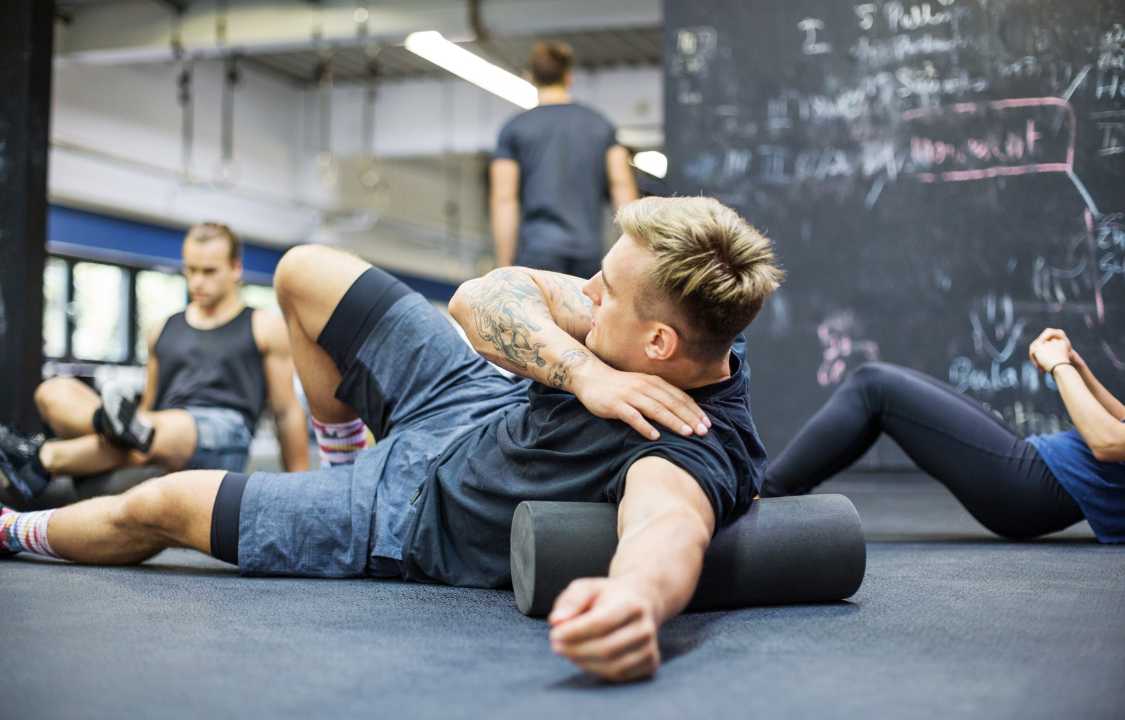Health Benefits, Insight
What to do with that Foam Roller at the Gym?
The foam roller is a simple yet effective self-myofascial release tool that can offer various benefits. It is commonly used as a form of self-massage to release tension and tightness in muscles, improve flexibility, and potentially enhance recovery.
What is myofascial release?
Myofascial release techniques, including foam rolling, aim to target both the muscles and the fascia to promote flexibility, reduce tension, and enhance overall movement. The fascia plays a crucial role in supporting and stabilizing muscles, and when it becomes tight or develops adhesions, it can limit muscle function and lead to discomfort.
Foam rolling applies pressure to specific areas of the fascia and underlying muscles, helping to release tension and improve blood flow. This, in turn, can contribute to increased flexibility, reduced muscle soreness, and enhanced overall mobility.
It’s worth noting that while foam rolling is a popular and accessible form of self-myofascial release, other modalities like massage therapy and chiropractic care can also target the fascia and muscles to provide relief and promote optimal function. Each approach may have its unique benefits, and individuals often find success in incorporating a combination of these techniques into their wellness routines based on their specific needs and preferences.
Why is myofascial release performed?
The body’s response to stress, overuse, or injury can lead to muscle tightness as a protective mechanism. While this tightening is often a natural and necessary response to prevent further damage, as Dr. O’Neill mentioned, sometimes the muscles may not “get the memo” to relax, even when the initial threat or injury has resolved.
In such cases, techniques like foam rolling can be beneficial. Applying pressure to tight areas through self-myofascial release can help signal the muscles and fascia to relax, improve circulation, and reduce overall tension. It’s a way to encourage the body to release areas of tightness that may no longer be serving a protective purpose.
Regular use of foam rolling, combined with appropriate stretching and strengthening exercises, can contribute to maintaining optimal muscle function, preventing injury, and promoting overall mobility. It’s important to approach these techniques mindfully, paying attention to how your body responds, and adjusting the intensity and duration of foam rolling based on your comfort level and specific needs.
How can a foam roller help?
Myofascial release techniques, whether through massage or tools like foam rollers, aim to address tightness, restrictions, or pain in the fascia and muscles. As you rightly pointed out, the challenge lies in the fact that pain and its source may not always be in the same location. This concept is known as referred pain, where the pain is felt in an area away from the actual source of the problem.
Foam rolling, while not a cure-all, has shown some benefits, particularly in the context of sports and exercise. As you mentioned, limited research suggests that foam rolling may help with various aspects, including reducing delayed onset muscle soreness (DOMS), aiding in recovery, alleviating muscle fatigue, and improving range of motion.
Incorporating foam rolling into a warm-up routine is a common practice among athletes and fitness enthusiasts. By targeting specific muscle groups before exercise, individuals aim to enhance flexibility, increase blood flow to the muscles, and potentially improve overall performance.
It’s important to note that while foam rolling can be a valuable tool, it’s not a replacement for other aspects of a well-rounded fitness routine, including proper warm-up, targeted stretching, and strength training. Additionally, individuals with specific health conditions or injuries should consult with a healthcare professional or physical therapist before incorporating foam rolling or other myofascial release techniques into their routine.
How should I use a foam roller?
Your guidance on using foam rolling as a tool rather than a mandatory exercise routine is sound advice. Incorporating it into warm-ups or as a method to address muscle stiffness can be beneficial for many individuals. Targeting larger muscle groups and gradually working through the “hurt so good” spots with controlled movements is a practical approach.
Starting with shorter durations (e.g., 5 to 10 seconds) and gradually increasing the time as your body becomes accustomed is a sensible progression. It’s crucial to pay attention to your body’s signals and avoid overdoing it, especially if you experience pain or discomfort beyond normal post-exercise soreness.
Your emphasis on stopping if pain causes clenching or grimacing is a key point. Pain that persists or worsens may indicate an underlying issue, and seeking advice from a healthcare provider is recommended in such cases.
As with any exercise or recovery technique, moderation is key. Too much intensity or duration, whether in foam rolling or other activities, can lead to tissue damage or other adverse effects. Individuals should listen to their bodies, start slowly, and adjust their approach based on their comfort level and physical response.
It’s always a good practice for individuals, especially those with pre-existing health conditions or injuries, to consult with a healthcare professional or physical therapist before incorporating new exercise modalities into their routine.

